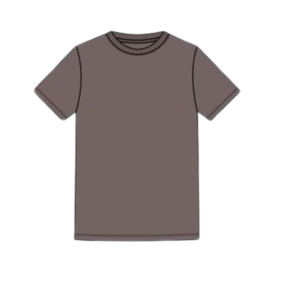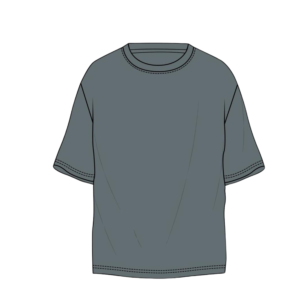What is GSM in the Clothing Industry?
 One is always likely to hear terms such as “GSM” or “grams per square meter” at various points when clothing is being sold, especially the fabrics like T-shirts, towels, and bed linens. But what actually is GSM and why is this important in clothing? In the following blog post, we have discussed the meaning of GSM and how it reflects the quality of the fabric which further influences clothing performance and their feel.
One is always likely to hear terms such as “GSM” or “grams per square meter” at various points when clothing is being sold, especially the fabrics like T-shirts, towels, and bed linens. But what actually is GSM and why is this important in clothing? In the following blog post, we have discussed the meaning of GSM and how it reflects the quality of the fabric which further influences clothing performance and their feel.
### What is GSM? A Simple Definition
GSM stands for **Grams per Square Meter**, which is a measurement of weight or density. It is how much fabric is actually contained within a square meter of material. A simple word, GSM helps determine how thick, dense, or light a fabric is. Its texture, durability, and usability depend on it.
### Importance of GSM in Clothing Industry
GSM is an essential parameter in the clothes industry for quality and suitability of a fabric for various products. This is why it matters. It establishes why:
1. Fabric thickness and feel:
– GSM refers to the thickness of the weave; the thicker the weave, the heavier the fabric; the thinner the weave, the lighter the fabric. Less substantial and less luxurious fabrics are thus at lower GSMs, while those preferred for warm-weather clothes and layering would be at lower GSMs.
2. **Durability:**
– The higher the GSM, the more durable and long-lasting the fabric is because it has more material in its structure. For instance, heavier GSM fabrics like denim or canvas are known for their strength and resistance to wear and tear, while lighter GSM fabrics like cotton voile or muslin may not withstand harsh use as well.
3. **Breathability and Comfort**:
– The GSM of a fabric can also influence its breathability. Lighter GSM fabrics, such as those with a GSM of 100-150, are often preferred for summer clothing like T-shirts or blouses because they allow air to flow through, keeping the wearer cool. Heavier GSM fabrics, like those in towels or sweatshirts, provide more insulation and warmth, making them ideal for colder weather.
4. **Purpose of the Garment**:
– Various types of clothing need different GSM ratings. For example:
– **T-shirts**: A normal T-shirt would have a GSM between 140-200. The lighter GSM T-shirts are soft and perfect for hot weather, while heavier GSM T-shirts provide a more structured fit and can be used for colder months.
– **Towels**: Towels are usually more absorbent and plush due to their higher GSM, which ranges from 350 to 700 GSM.
– **Sweatshirts and Hoodies**: These have a GSM of 280-350, making them warm and comfortable during the colder seasons.
5. **Quality Indicator**
– GSM can also serve as a determinant of the quality of fabric. For instance, premium cotton fabric might have a higher GSM that would make it feel more luxurious and thick. Lower GSM fabric, on the other hand, may be less expensive but may be flimsier or less durable.
### GSM and Fabric Types
GSMs can vary in different fabrics based on the type of material used and the intended use. Some examples include:
– **Cotton**: The fabrics may vary between lightweight and fluffy, with an average GSM around 100, used for summer dresses to heavy and dense, about 500 GSM for towels or thick bedding.
– **Polyester**: Polyester’s average GSM tends to range from 100 to 300 in most clothing items such as shirts, sportswear, and outerwear.
– **Denim**: Denim fabric is typically a bit higher in GSM, at around 200-400 GSM, which explains why it is more durable and robust.
### Determining GSM
GSM is usually measured in a lab by specialized equipment. But you can do a quick check at home. Here’s how:
1. Cut a piece of fabric approximately 10 cm x 10 cm in size.
2. Measure the weight of the fabric on a sensitive scale.
3. Apply the formula to calculate GSM:
**GSM = (Weight of Fabric in grams / Area of Fabric in square meters) x 1000**
This is a very rough estimate and is usually used for small-scale measurements, such as checking fabric samples.
### The Bottom Line: Why You Should Care About GSM
Understanding GSM is important while shopping for clothing and fabrics because it lets you decide on your clothing needs about fabric quality, comfort, and durability. If you seek a soft, breathing T-shirt for summer or a cozy, heavyweight towel, knowing the GSM of a fabric will allow you to choose the right product according to your needs.
Ultimately, GSM is a key indicator of fabric characteristics, making it an essential part of both production and consumer decision-making in the clothing industry. Next time you come across GSM listed on a product label, you will have a deeper understanding of what that number means and how it influences the feel and performance of the garment!
















